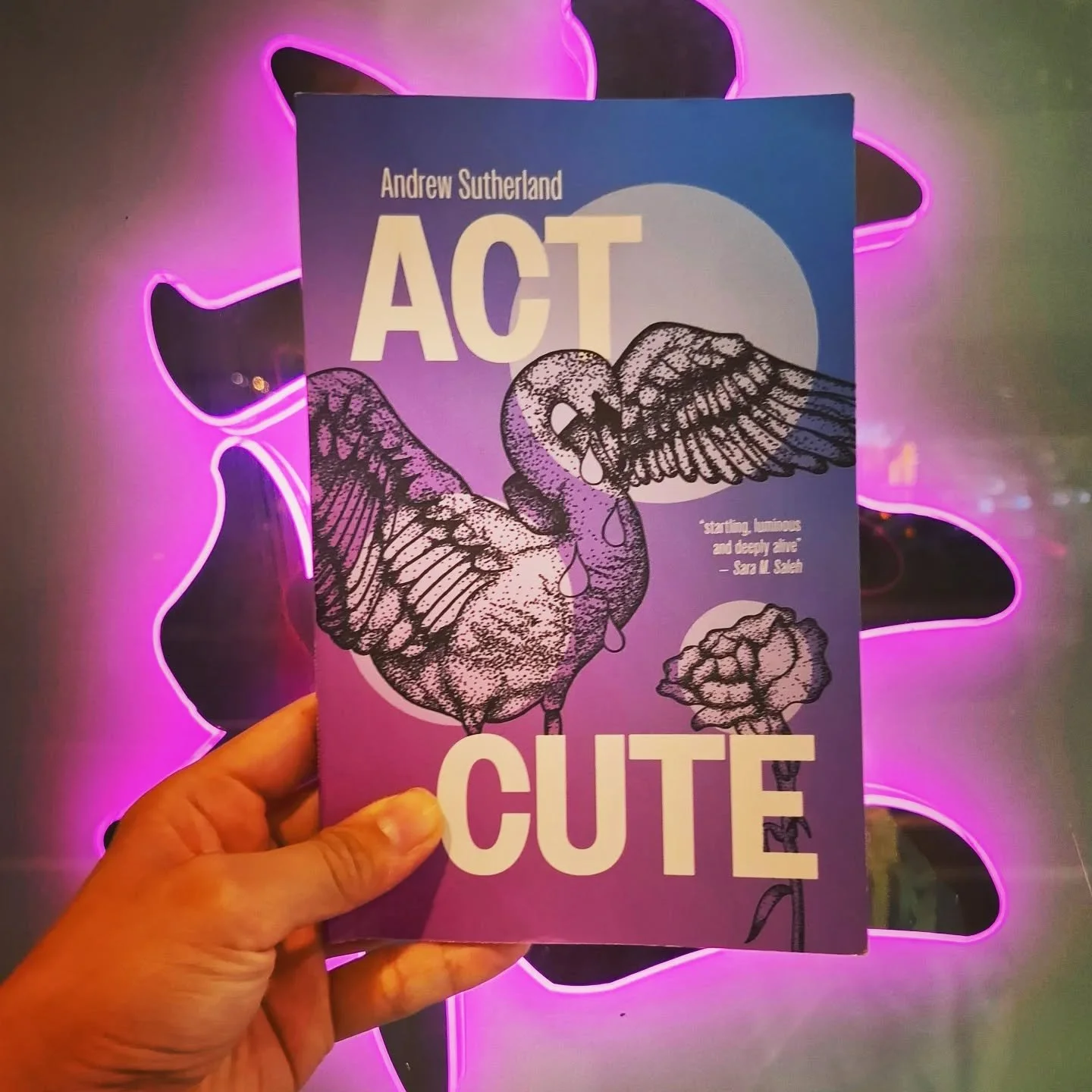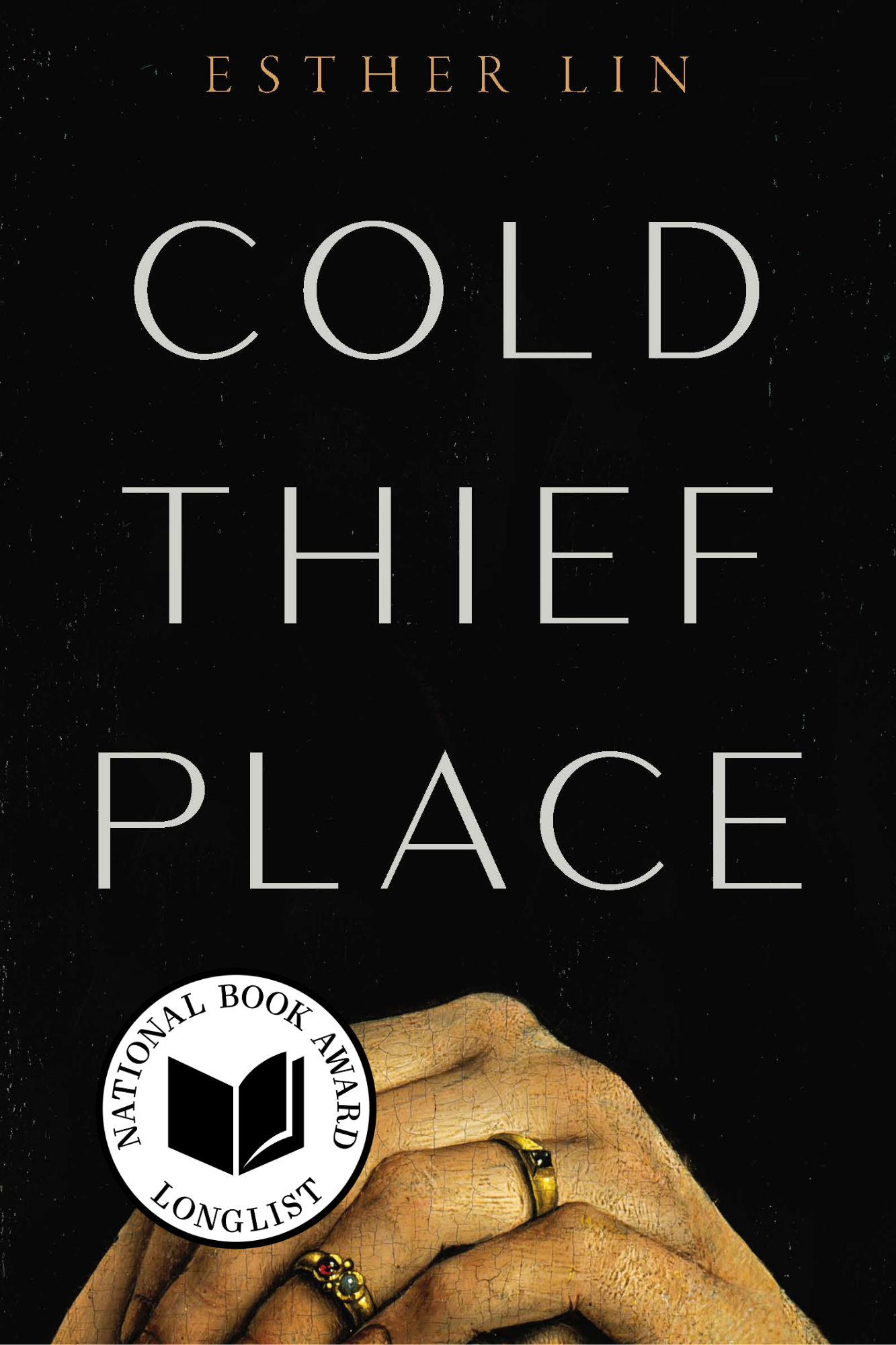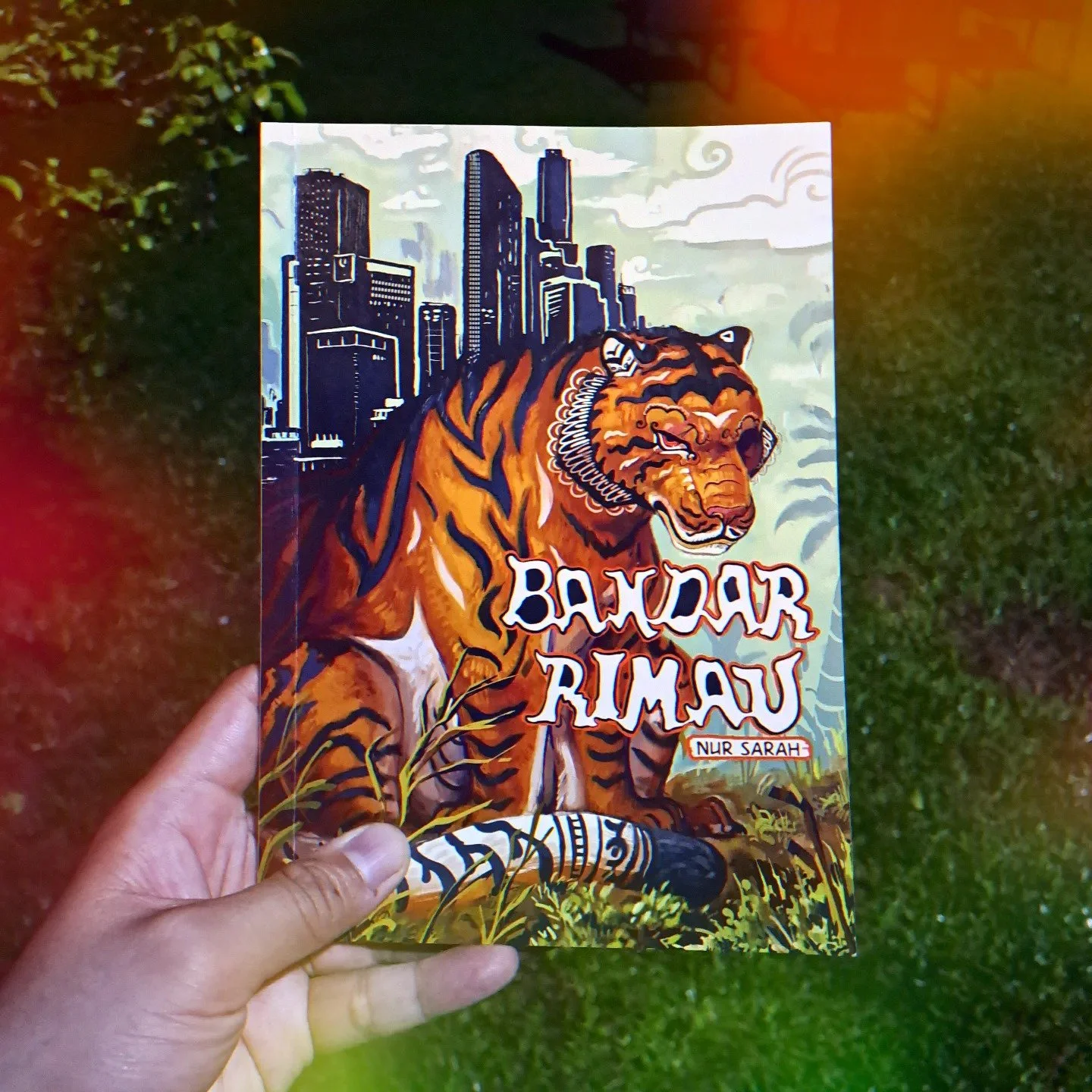#YISHREADS May 2023
By Ng Yi-Sheng / @yishkabob
It’s the month of May, so let’s speak of maybes—i.e. the wonderful world of speculative fiction! I’ve chosen a Southeast Asian selection, which is fitting since it’s Asian American and Pacific Islander Heritage Month. But let’s be real: in the case of this column, that’s not affirmative action; that’s hegemony.
My readings range from the classic to the contemporary, drawn from Indonesia, Thailand, Malaysia, the Philippines (by way of Australia), and Singapore, reflecting the region’s historical fascination with heroes and horrors, plus our happy habit of borrowing from other cultures, whether they’re Indian epics or the tropes of the powers that colonised us. It also marks the first time I’m including a completely non-English text!
Of course, this is just a fraction of the Southeast Asian spec fic I’ve been reading in the past six months. If you’re curious, check out my social media for my recent thoughts on other works, such as Joyce Chng’s Fire Heart, Aydeel Djoeharie and Alan Bay’s Sacred Guardians, Benjanun Sriduangkaew’s Mirrorstrike, Vida Cruz-Borja’s Song of the Mango and Other New Myths, and the anthology Fright: Volume 1.[1]
The Grand Legend Ramayana: Vol 01, by Is Yuniarto
re:ON Comics, 2015
I'm not in the habit of reading stuff in Bahasa Indonesia—I've got the shakiest grasp of the language via Malay—but after attending the author's talk at Singapore Writers Festival 2022, I had to grab myself a copy of his comic. Not too hard to follow, thanks to the pictures!
And damn, it's a semiotic fruit salad. It's already complicated enough that the author's using Japanese manga conventions to educate young Indonesians about the Ramayana—an epic of Indian origin, he concedes, but nevertheless a staple of the Javanese art of wayang kulit, even adapted into comics back in the 60s, but largely forgotten by his younger countrymen.
Then there's a big European steampunk theme going on in his tale, with the young princes Rama and Laksamana dressing like Edwardian gentlemen beneath their gilded headdresses and armlets. (Even the Garuda wears a necktie!) Pistols and fireballs are fuelled by shakti, or mystical power; the yakshas they hunt in Gothic cityscapes recall the Balinese demon queen Rangda; the bad guys are 1930s Chicago gangsters in Wild West kerchiefs; Shinta (the Javanese name of Sita) wears fetish gear with a bazooka; and of course everyone's pale-skinned with occasional blond hair and blue eyes...
Sure, a lot of these signifiers are common in manga already. But it’s still fascinating how the series title's accompanied by katakana in a tiny font, while the chapter titles are in English in a Thai-inspired font (not the Javanese aksara). All these layers of cultural borrowing and mutation going on, just to get kids interested in a version of a story their grandparents loved.
Still, it works! Lotsa cool action sequences (Rama routinely gets his shirt torn off in combat) and court intrigues (Kaikeyi isn't just plotting the princes' downfall, but a grander geopolitical scheme; and though Ravana hasn't popped up yet, just who is that monster possessing the corpse in a labcoat?). Plus, fan art in the back pages! The author even showed us cosplay pics!
Makes me a little sad that I was too stingy to buy further volumes in this series. By the way, the author's also got a Mahabharata-inspired comic, titled Garudayana.
The Tale of Prince Samuttakote: A Buddhist Epic from Thailand
Translated by Thomas John Hudak
Ohio University Monographs in International Studies, Southeast Asia Series, No. 90, 1993
Wowee, got my hands on some 17th century Southeast Asian spec fic! Specifically, it's a fanfic of an apocryphal incarnation of the Buddha (only found in the Jataka tales of Thailand, Myanmar, Laos and Cambodia, not the subcontinent), commenced in the 1600s by Phra Maharatchakhru, supposedly continued by King Narai himself, and finally completed in 1849 by the scholar-prince Paramanuchit Chinorot. It's so antique that it's written in the Khmer-style kaap metre, not the more famous Thai khlong!
But honestly? The story's a little silly. We have a big intro about setting the scene, praising Buddha, showing us Prince Samuttakote's kingdom of Phromburi where the court marvels at entertainments such as rhinoceros-and-crocodile fights, a wrestling match between a Thai and a Lao, a spear fight between two Javanese, an expedition by the prince into the forest to hunt elephants (a royal duty, apparently).
Then a bodhi-tree spirit decides to transport the handsome prince into the bedroom of the beautiful and virginal princess Phintumadi of Romyaburi so they can have rapturous sex together, but transports him back in the morning. Which means that in order to win her hand he has to do a whole contest of lifting a sacred bow and fighting off her fellow suitors (pretty much plagiarised from the Ramayana).
After their wedding they find a wounded phittayathorn (a minor deity? Google isn't helping), nurse him back to health, and get gifted a magical sword which flies them off for a honeymoon in the Himavanta mountains (a fantastical version of the Himalayas). Only they get stranded there when an evil phittayathorn steals the sword, whereupon they get separated on the waters and have a whole roundabout path to reunion in which Phintumadi sells a jewel to build a shrine to their love, which Samuttakote, having been rescued by the goddess Mekala and regifted the sword, manages to encounter while disguised as a Brahmin, after which they return to their kingdoms and reign happily ever after...
All of which feels like several different plots Frankensteined together! But Phra Maharatchakhru did lay out the whole story in his introduction, so it's not the creative licence of the later authors. What's kinda fascinating is how everyday the miracles are—Samuttakote's suitors are depicted as riding chariots pulled by winged lions and nagas, for chrissakes, and they're just arrow fodder. Even Phintumadi manages to identify her lover by getting her maidservant Thari to draw pictures of various gods for her, whereupon she flies through the air and gets into the Phromburi palace past sleeping guards to inform the prince of her mistress's desire to boink him again in holy matrimony.
Oh, and another odd thing about this romance: Samuttakote has a wife (Surasuda) and kids at the beginning of the story, and they never get mentioned again after he says goodbye for his hunt! Different cultural values, I guess—but I suppose monogamy is no excuse to get in the way of an OTP.
As a regular reader of Thai literature, I’m also seeing how a work like this paves the way from an essentially Indic, religious-centred imaginative heritage to the more playful national epics of the 19th century, like Khun Chang Khun Phaen and Sunthorn Phu’s Phra Aphai Mani. There’s no need to pretend the sexy magical protagonists of those books are incarnations of the Buddha!
The Girl and the Ghost, by Hanna Alkaf
Harper, 2020
So was anyone else a teensy bit disappointed by the author's previous YA novel, The Weight of Our Sky, cos it used a djinn as a way of talking about OCD rather than actually revelling in supernatural lore? If so, rejoice, cos this new work has hantu coming out the wazoo!
The focus is on a very little-known specimen of hantu, the pelesit, which takes the form of a grasshopper and does his master's bidding in return for a few sips of blood... but what happens when the master in question is an innocent little girl, Suraya, who decides to name him Pink? The story only begins with the taming of the demon, as he learns to feel and express love for the first time.
Shit goes down once Suraya starts making human friends, cos that's when Pink learns envy—and I'm not giving away the rest of the plot, cos the complex dynamics of friendship and unequal power and compassion and family and trauma that emerge deserve not to be spoilered; they're stunningly deep for a tale that never loses sight of the fact that it's targeted at kids.
The setting also happens to be super Malaysian: it's a world where kampung witches who curse jambu trees and hipster cafés and elite schools and iPhones all casually co-exist. Folks of different races, too: Suraya's friend is a Star Wars-crazed Chinese girl named Jing; and it's nice for a change that her family's portrayed as loud and welcoming and rambunctious, while Suraya's is stiff and repressed.
So yeah, Singapore parents: buy this for your kids instead of IP from the UK's biggest transphobe. But make sure your progeny actually enjoy being scared—the ghostly things here aren't just spooky; sometimes they're genuinely pretty horrific!
Locust Girl: A Lovesong, by Merlinda Bobis
Spinifex Press, 2015
This author was also in town for Singapore Writers Festival 2022, so I decided to finally dig into this novella of hers! And damn, it's weird.
It begins like a YA sci-fi tale, with a nine-year-old girl growing up in a post-apocalyptic refugee camp where the inhabitants have numbers instead of names and have nothing to eat but sand and locusts... but then the site is consumed by fire, and the girl (now named Beena) survives buried underground for ten years with a singing locust embedded in her forehead.
And as she wanders the devastated planet in search of the Five Kingdoms, the only nation where colours still survive—red flowers, yellow fields, green trees, blue skies—the story stops making linear sense, with characters disappearing and reappearing without clear explanation, with songs exerting supernatural power, with an inexplicable arrival, arrest and public trial within the Five Kingdoms.
This is science fiction as magical realism, based not on granular description and coherent worldbuilding, but instead intent on evoking the nightmare of an ecofascist world in the wake of climate disaster. The Five Kingdoms glorify themselves as the preservers, and all others as the wasters, even as they starve, exploit and firebomb the destitutes beyond their barbed-wire boundaries.
And among those who live in this hellworld, song is cultural memory—a highly prized artefact is a record of the Beatles' Abbey Road, which its beholders cannot name, wondering only at the four men, three shod and one barefoot, walking in a place they have never beheld, a city. But song is not only revitalising; it's traumatic, awakening mourning for mothers and sisters who perished. Nevertheless, it's deeply troubling to the first-worlders who would silence them through propaganda and genocide—as Princess Leia would say, it's their only hope.
Honestly, the novel's kinda difficult to follow, disobeying obvious plotlines. Beena doesn't triumph over the bad guys; she's executed and lives on in a mystical afterlife as a locust. The world at the end of the story is not yet healed, only witnessed, like a prophecy, like a warning. Like a song.
Work-Life Balance: Malevolent Managers and Folkloric Freelancers, by Benjamin Chee and Wayne Rée
Difference Engine, 2022
Damn, there's a lot to unpack in this Singaporean hybrid graphic/textual novel!
First, the whole premise of the tale: how a multi-culti group of Asian female monsters (Tiqqy the pontianak, Lita the manananggal, Xiao Huang the ba jiao gui, Tashny the rakshasi and Asuka the kuchisake-onna) end up working menial admin jobs for the Singapore branch of a multinational Company, under the thumbs of dudebro demons from Christian lore (Mammon, Belial). All these themes of colonialism, neocolonialism, patriarchy and sexist microaggression, the failure of the capitalist dream towards individualistic fulfilment, the sacrifice of heritage at the altar of progress... and the discovery by Xiao Huang that their identities are in fact mutable; that they all represent the nightmare of the patriarch, hence her newfound ability to shift form and race to be a pontianak in Malaysia, a nang tani in Thailand, etc…
Then there's the fact that this is a text by two authors: Wayne did the chunks of prose and Ben did the comics, each created in tandem, interweaving and overlapping in story... yet not quite corresponding. While Wayne's tale takes place in a very recognisably urban Singapore, drawn from his own experiences of cubicle hell, with the hantus blending into the Raffles Place office lady community, Ben chooses the fabulousness of distinct costumes and fabulous backgrounds, the Company a citadel rising above dragon roofs and jungle. Gorgeous visuals, mind you—all these gilded Theravada nagas and garudas and explosive battle scenes, plus accompanying appendices of unused art and notes on process.
What emerges from this is a premise that's full of promise—I think I'd like to hear more everyday stories of jiangshi and harimau jadian and disaffected mortals pushing pencils together—but not quite given the complexity and development it could've, due to the desire for a big ol' us-vs.-them plot. Zee, the nonbinary bomoh who's been helping these hantu survive beyond the Company's clutches, is gathering all of them together to take back their power and independence—and the hantu are disappointingly uncomplicated in their morals, no longer eating people, only unleashing their claws on the greedy and lecherous and male. (Seriously, why do we consistently girlboss the pontianak when she was traditionally most feared by pregnant women? I do think having two straight men doing this project led to some overcompensation against sexist tropes, rather than their reclamation.)
But I do think the authors are aware of their complicated role here, which is why there's the fascinating key character of Mephistopheles, the negotiator caught between the two camps, who first absorbs the local gods into the corporation then later takes their side in the internal/infernal sabotage. An expat man in an Asian women's world (he's literally got a flat in Tiong Bahru), he ends the story by grabbing his ledger full of mortals' names, drawing away from the image of the final battle by telling us the great fight is never about winners or losers, but balance.
Not the most satisfying conclusion, but an honest one, given Singapore's inextricable place in global hegemony and exploitation. We dream of both the end of the world and capitalism. But how much of the fantasy do we really dare to follow through?
[1] My Facebook reviews are here:
Ng Yi-Sheng (he/him) is a Singaporean writer, researcher and LGBT+ activist. His books include the short-story collection Lion City and the poetry collection last boy (both winners of the Singapore Literature Prize), the non-fiction work SQ21: Singapore Queers in the 21st Century, the spoken word collection Loud Poems for a Very Obliging Audience, and the performance lecture compilation Black Waters, Pink Sands. He recently edited A Mosque in the Jungle: Classic Ghost Stories by Othman Wok and EXHALE: an Anthology of Queer Singapore Voices. Check out his website at ngyisheng.com.
If you’ve enjoyed reading this article, please consider making a donation. Your donation goes towards paying our contributors and a modest stipend to our editors. Singapore Unbound is powered by volunteers, and we depend on individual supporters. To maintain our independence, we do not seek or accept direct funding from any government.














Ashley Marilynne Wong reviews Ling Ling Huang’s Immaculate Conception.